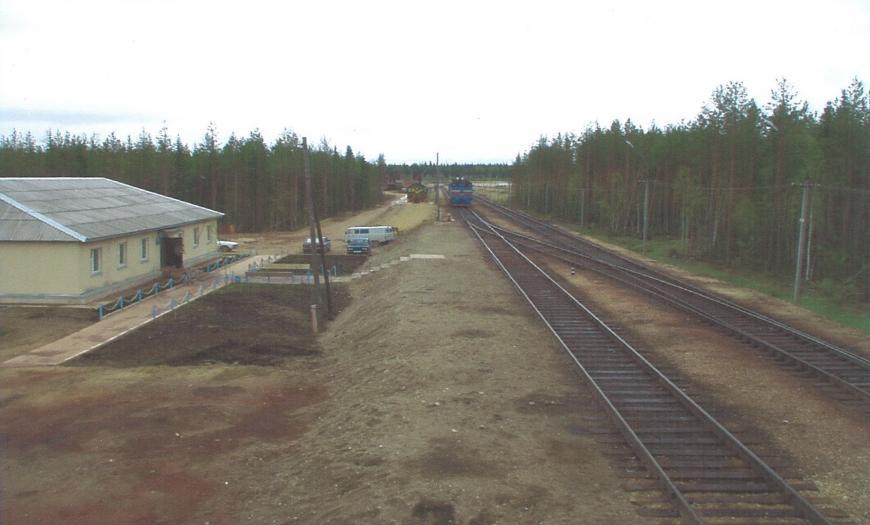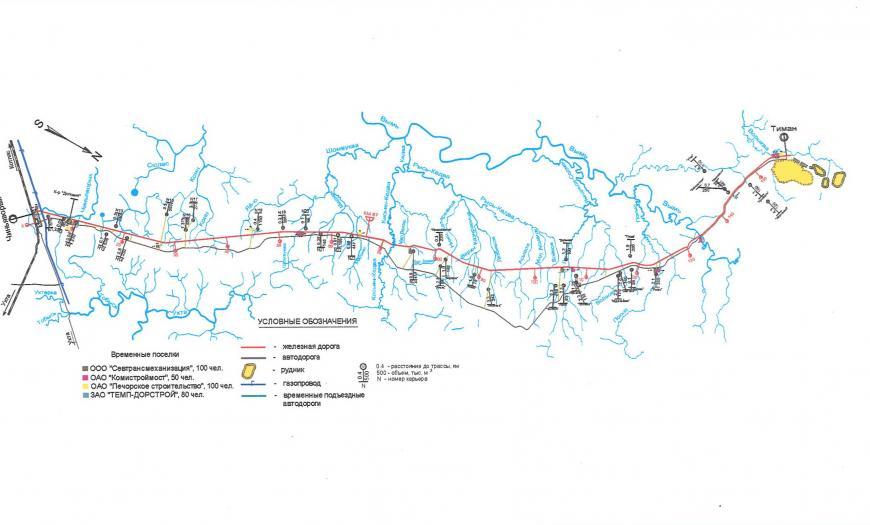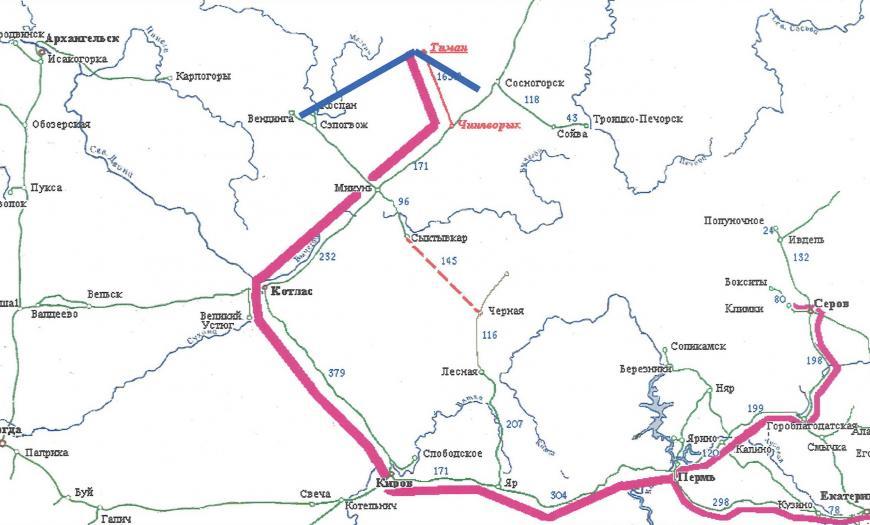The Chinyavoryk — Timan railway line is the first commercial line and the largest railway built in Russia in 1991–2008. The main line was intended for the export of bauxite from the Sredne-Timansky mine to the railway network for further transportation to the plants of the Urals.
In 1988–1989, Lengiprotrans developed a technical justification for an access railway. After that, the work was suspended due to the economic crisis in the country. In 1994, the preparation of the technical justification was resumed, in which 7 options for the direction of the route were considered and the optimal decision was made.
Main objects projected on the line:
• Traffic control center at Timan station with the construction of an integrated transport department. It housed a depot for servicing mainline and shunting locomotives of the mine, a room for uncoupling repair of cars and premises for linear machinery and equipment of all services, as well as administrative and utility rooms.
• Terminal station Chinyavoryk-Promyshlennaya, located in 4 km from the station Chinyavoryk.
• Intermediate siding for 67 km for parking of track and snow removal equipment.
• 4 medium and large bridges, including a combined road-rail bridge across the Vym river with a length of 120 m.
Traffic on the access railway is regulated by telephone communication between Timan and Chinyavoryk-Promyshlennaya stations. The weight norm of the train and the steering slope are selected in such a way that there is one train on the entire line during the journey. It also made it possible to reduce the number of intermediate stations and sidings, and the length of the route was reduced by 10 km.
In August 2001, working traffic was opened from the Chinyavoryk station to the 67 km junction, which was later renamed as Makarov junction in memory of the chief engineer of the railway project. In September 2002, the Chinyavoryk — Timan line was opened and the first train was dispatched.
Design of the railway line Chinyavoryk — Timan
Author's department:
Project Status:
Access railway to the Sredne-Timansky bauxite mine







